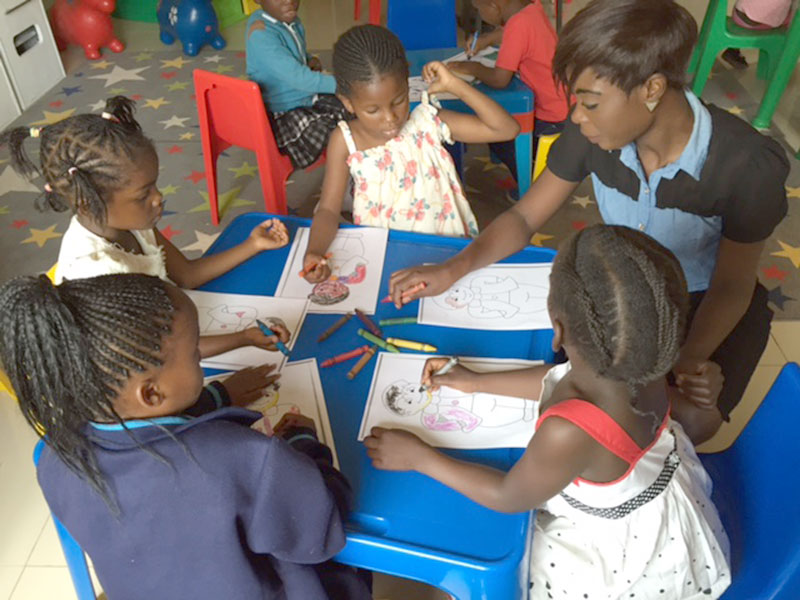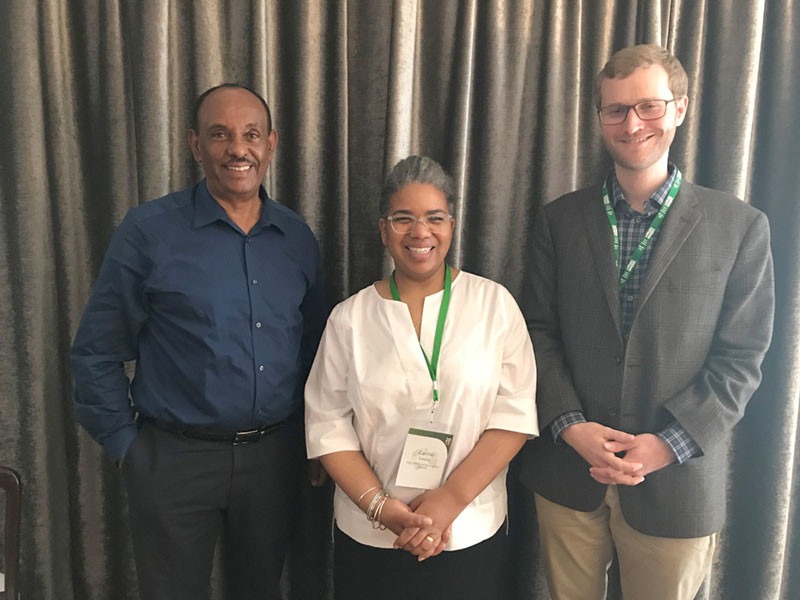Mexico City, MéxicoThe first several years of a child’s life have long-lasting implications on performance in school, social skills and health. The value of early childhood development is widely recognized in preparing children for school and beyond, but in many low-resource contexts, access to early learning opportunities is limited.
At the Conferência da Sociedade de Educação Comparada e Internacional em março 29, experts on a panel titled “Building a Diverse Workforce for ECD in Low-Resource Contexts” said that part of the challenge is a lack of qualified teachers and facilitators.
Tassew Zewdie of Creative Associates International, former Chief of Party for the USAID Zambia Read to Succeed projeto, said in Zambia, the government has just in recent years started to make a push toward expanding early childhood development.
“Because early childhood education was not a priority for the Ministry of Education in Zambia earlier on, there is a very serious shortage of teachers,"ele disse. “The options for raising our children and giving them appropriate care and support is very limited.”
Drawing from experience in Zambia, Rwanda and Burkina Faso, panelists demonstrated how development programs are working to strengthen early childhood education and build up a cadre of teachers that can facilitate early development.
These initiatives, in collaboration with national and local governments, can meet the needs of young children, pais, communities and education systems.

Trained teachers sharing knowledge
In Lusaka, Zâmbia, Creative piloted an early childhood development program to support staff of the Projeto Ler para Ter Sucesso da USAID e seus filhos. The center, named Casa da Mimi after late Creative co-founder Mimi Tse, gave project staff a place to bring their young children where they could learn and play.
Mimi’s Place employs a methodology called “The Creative Way,” which seeks to instill a lifelong love of learning in young children. The stimulating and nurturing classroom environment and skilled staff promotes hands-on learning, exploration and the development of reading and math skills.
Zewdie said that while the center was small – serving about 20 children – every employee who would interact with the kids received extensive training on a standardized “toolkit,” from the senior teacher to kitchen staff.
“The Mimi’s Place teachers, even though they may have previous training, they need to be trained on the toolkit, focusing on areas that are unique to facilitating early childhood education centers,"ele disse. “After the center was established, these teachers started to serve as role models.”
Zewdie said that the Mimi’s Place staff brought new knowledge to the local “cluster” of teachers and also informed the Ministry of Education.
He added that other companies, such as hotels and banks, expressed interest in replicating the Mimi’s Place model for their own staff. And Creative plans to include similar early childhood education centers in other project locations outside of Zambia.
“Other teachers are benefitting from the experience of this center, parents are benefitting, and the Ministry of Education is benefitting because they come and learn,” Zewdie said. “And other companies have started to really think about establishing the same model for their employees.”

Reducing unemployment through childhood education
In Rwanda, the Junior Caregiver Program, financiado pelo Reino Unido. Department for International Development, sought to support early childhood education through facilitator training focused on unemployed young women.
Two hundred women from four provinces were trained and placed in three-month internships, increasing employment and bringing best practices to early childhood education centers.
Jordan Detwiler-Michelson, International Project Coordinator at the Education Devleopment Center, said the training expanded on existing methodologies that prioritized literacy and numeracy to a more holistic approach that also focuses on motor skills, social emotional learning and conflict resolution.
“We discovered that the methodology gap is not that difficult to close,"ele disse. “In this case, we were able to train relatively inexperienced young women who were then able to use best practices in early childhood development in the classrooms.”
Meeting teachers where they are
Carrie Lewis of the Education Development Center, said that in Burkina Faso, very few children receive early education, e apenas 21 percent of early childhood educators are qualified to teach, a majority of them having little or no literacy.
Em resposta, the World Bank-funded Project to Improve Access to Quality Education is supporting community-based early childhood development centers called “bisongos,” and the Education Development Center has developed audio-based technology to improve instruction.
The Interactive Audio Instruction tools, used in several countries, create 30-minute audio lessons for the classroom driven by characters and stories that promote learning and engagement. The student lessons are complemented by audio lessons for the teachers themselves, which are done in groups and allow for distance learning.
“It uses the same type of methodology, the characters and the storylines, to mimic teaching challenges that they might find at the bisongos,” Lewis said of the teacher instruction. “The programs use the same methodology as the children, but they’re based on adult learning theory, so were looking at ways we can draw in the educators to work together to discuss, to review, to reflect.”
Lewis said that in a country with 60 percent illiteracy rate, programming has to adapt to be effective. Using audio-based lessons and other visual guides delivers information and training to illiterate and low-literacy instructors.
“We’re meeting facilitators where they are,” Lewis said.
Frequentando o CIES?
Para visitar o CIES da Creative 2018 Centro de relatórios especiais, Clique aqui. Para uma programação completa do CIES da Creative 2018 painéis, incluindo painelistas, horários e locais, clique aqui. Além das sessões de painel, pare no estande 54 para interagir com especialistas em educação e saber mais sobre os projetos globais da Creative. Siga-nos no Twitter @1977Criativo para atualizações ao vivo.